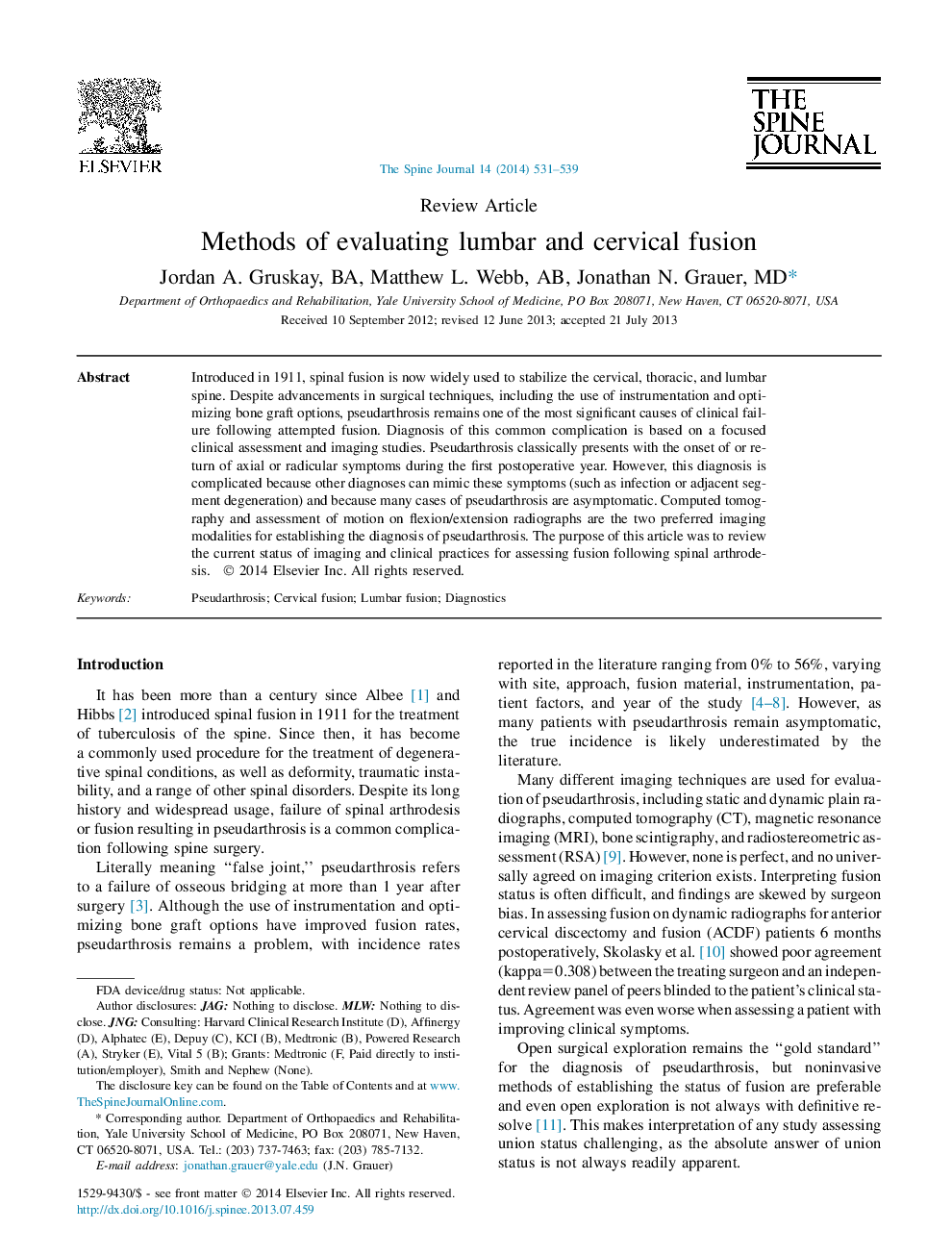| کد مقاله | کد نشریه | سال انتشار | مقاله انگلیسی | نسخه تمام متن |
|---|---|---|---|---|
| 4097882 | 1268602 | 2014 | 9 صفحه PDF | دانلود رایگان |
Introduced in 1911, spinal fusion is now widely used to stabilize the cervical, thoracic, and lumbar spine. Despite advancements in surgical techniques, including the use of instrumentation and optimizing bone graft options, pseudarthrosis remains one of the most significant causes of clinical failure following attempted fusion. Diagnosis of this common complication is based on a focused clinical assessment and imaging studies. Pseudarthrosis classically presents with the onset of or return of axial or radicular symptoms during the first postoperative year. However, this diagnosis is complicated because other diagnoses can mimic these symptoms (such as infection or adjacent segment degeneration) and because many cases of pseudarthrosis are asymptomatic. Computed tomography and assessment of motion on flexion/extension radiographs are the two preferred imaging modalities for establishing the diagnosis of pseudarthrosis. The purpose of this article was to review the current status of imaging and clinical practices for assessing fusion following spinal arthrodesis.
Journal: The Spine Journal - Volume 14, Issue 3, 1 March 2014, Pages 531–539
